Author(s)
JJJJJerome Ellis
“The Clearing: Music, Dysfluency, Blackness, and Time” was originally published in Journal of Interdisciplinary Voice Studies, 5, no. 2, 2020, pp. 215–233 and is republished here in revised form with kind permission of the author.
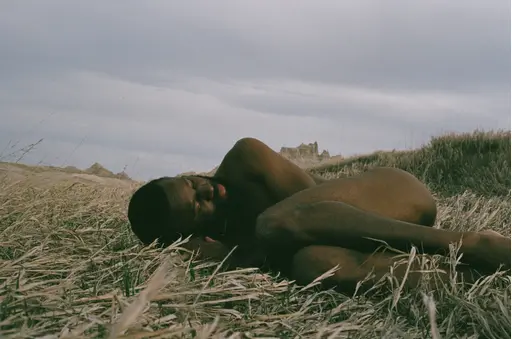
—Sarah Wooden Johnson, Weevils in the Wheat: Interviews
with Virginia ex-slaves,1976
My thesis is that blackness, dysfluency, and music are forces that open time. Opening brings possibilities: temporal refusal, temporal escape, temporal dissent. But because thesis also refers to a downbeat in music, my thesis must move, must metamorphose, like music. Sound is vibration, a wavering band of energy, endless restlessness. For us to perceive it, the sound waves emitting from the source must make our eardrums vibrate. Du Bois begins each chapter in The Souls of Black Folk (1903) with lyrics and a few bars of musical notation from spirituals. With this gesture he makes the page vibrate. He contraposes the vibratory nature of music with the essentially lapidary nature of writing. As the cover flap to a collection of José Arreola’s works reads: “ La escritura fue originalmente cincelada en piedra. Mediante la mano es una incisión del espíritu [Writing was originally chiseled into stone. A spiritual incision moving through the hand]” (1995). So the beat goes on and new theses arise with each laying down of foot to ground (for thesis also refers to the stressed syllable of a foot in verse). Harriet Jacobs reminds us that black loops in black music (including but not limited to rap and house) are always black loop(hole)s of retreat; 2 that black music, like black escape, is a never-ending activity and never an achievement. And when the black stutterer loops a syllable (m-m-m-m-m-m-mother), this too is a black loop, black music, black activity. My thesis is that if (fluent) speech has been used to police the border between humans and non/subhumans, then black dysfluency enfleshes (to borrow a term from Ashon Crawley) the paradox of black humanity. 3 Are black people humans? The jury’s still out on that. And who’s on the jury? Further: if speech is a property of the living, black dysfluency enfleshes the paradox of black life itself. Do black lives matter? If so, why does the phrase need to be “repeated and recited incessantly?” 4
We live within the veil, and the veil is ever waving.
*
How can we think about blackness and dysfluency together?[5] We can begin here:
About this time my master came down the field. I became very bold and answered him when he called me. He asked me very roughly how I came to plow up the corn, and where the horse and plow were, and why I had got along so slowly. I told him that I had been talking with God Almighty, and it was God who had plowed up the corn. He looked at me very strangely, and suddenly I fell for shouting, and I shouted and began to preach. The words seemed to flow from my lips. When I had finished I had a deep feeling of satisfaction and no longer dreaded the whipping I knew I would get. My master looked at me and seemed to tremble. He told me to catch the horse and come on with him to the barn. I went to get the horse, stumbling down the corn rows. Here again I became weak and began to be afraid for the whipping. After I had gone some distance down the rows, I became dazed and again fell to the ground. In a vision I saw a great mound and, beside it or at the base of it, stood the angel Gabriel. And a voice said to me, ‘Behold your sins as a great mountain. But they shall be rolled away. Go in peace, fearing no man, for lo! I have cut loose your stammering tongue and unstopped your deaf ears. A witness shalt thou be, and thou shalt speak to multitudes, and they shall hear. My word has gone forth, and it is power. Be strong, and lo! I am with you even until the world shall end. Amen.’[6]
Or we can begin here:
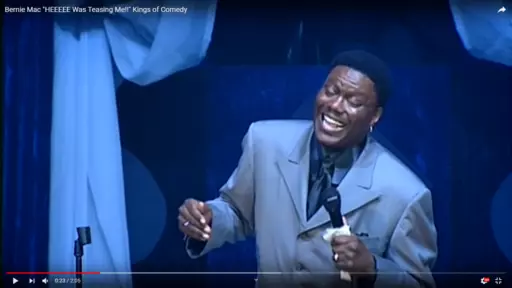
“I’m gonna begin by borrowing a thought from Glissant: when we regard each other, we should tremble.” 8 This is how Teju Cole once introduced Fred Moten at a reading in honor of T.S. Eliot, who wrote: “For most of us, there is only the unattended / Moment, the moment in and out of time. / The distraction fit, lost in a shaft of sunlight, / The wild thyme unseen, or the winter lightning / Or the waterfall, or music heard so deeply / That it is not heard at all, but you are the music / While the music lasts.” 9
Or we can begin with my mother Pauline. I inherited my stutter from her. She was born in Higgin’s Land, St. Ann, Jamaica. Her father Charles, aged one hundred at time of writing, 10 is head pastor of a storefront in Canarsie, Brooklyn.
My master looked at me and seemed to tremble.
*
My thesis is that blackness, dysfluency, and music are shaped by forms of subjection enacted in the sphere of time—what I call temporal subjection. But because these three forces open and shape time, they create alternative temporalities that can help us heal from the wounds of that subjection. Healing, too, is an activity, not an achievement.
Temporal subjection enacted against black people occurs in many spheres. Brittney Cooper examines several in her work: black women’s reproductive health; legal and extralegal murders of black people; racially skewed correlations between zip code and life expectancy; and the conceptualization of history itself. 11 Here I’ll focus on the plantation, and two scenes of temporal subjection discussed by Mark M. Smith in Mastered by the Clock: Time, Slavery, and Freedom in the American South. The first comes through the testimony of a former slave “named” 12 William Byrd, interviewed in the 1930s by the Works Progress Administration:
Master, he had great iron piece hanging just out side his door and he hit that every morning at 3:30. The negroes they come tumbling out of their beds. If they didn’t master he come round in about thirty minutes with that cat-o-nine tails and begins to let negro have that and when he got through they knew what that bell was the next morning. 13
Slavery’s ontological brutality knotted together time, sound, and violence. According to Smith, because masters wanted to inculcate time obedience in their slaves but didn’t want to give their slaves watches (“time-owning slaves would, after all, readily become like free, time-negotiating northern workers”), they generally kept clocks and watches for themselves. 14 They communicated clock time using bells, horns, and other sounds. And if the sound wasn’t obeyed, the whip intervened. When Byrd says ”they knew what that bell was the next morning,” he’s pointing to the ways that knowing the time, for slaves, was often shadowed by knowing the sound of that time (bell, horn) and knowing the consequences of not obeying that sound. The whip was an extension of the clock.
The second scene concerns prediction. Predict, from Latin praedicere, “to say beforehand.” If, for example, slaves learned that plantation checks were held at eight o’clock every night, this knowledge could help them when planning to steal away. They knew they just needed to be in their quarters at eight. Masters would catch on to this and deliberately make the plantation checks unpredictable. Smith quotes James Henry Hammond’s advice to his overseers in 1857–1858:
The overseer must see that all the negroes leave their houses promptly after horn blow in the morning. Once, or more, a week he must visit every house after horn blow at night to see that all are in. . . . He should not fall into a regular day or hour for his night visit, but should go so often and at such times that he may be expected anytime. 15
Surveillance and violence authorized by unpredictability. The master may be expected anytime:
4:42 a.m. (the time Renisha McBride was murdered)
Approximately 10:18 p.m. (Bree Black)
7:16:55 p.m. (Trayvon Martin)
Shortly after midnight (Breonna Taylor)
Between 9 p.m. and 9:37 p.m. (Philando Castile)
Shortly after 11 a.m. (Tony McDade)
Approximately 2:15 p.m. (Michelle Cusseaux)
Approximately 12:40 a.m. (Aiyana Stanley-Jones)—
Stuttering (especially in the form I present with, the glottal block) creates unpredictable, silent gaps in speech. I call these gaps . When this happens while I’m speaking with someone, I often feel like time has stopped. If fluent speech (and by extension fluent time) is a path through a forest, when I stutter I come into a clearing where the path temporarily disappears. The clearing opens the present moment. But when my interlocutor interrupts me while I’m stuttering, this expanded present is foreclosed. An example: I call a bookstore.
“Barnes & Noble, how can I help you?”
“yes, I’d like to see if you have a certain book available.”
“Sure, what’s the title?”
“”
“Hello?”
“”
“Are you still there?”
“”
They hang up. The bus door is closed.
Why did they hang up? They probably assumed the line dropped. They didn’t know I was stuttering, that I’d entered the clearing. Why didn’t they know? Is it because of an inherent opacity in the way I stutter, making it hard to tell a stutter apart from a bad phone connection? Is it because the “social regime of fluency” doesn’t make room for stuttered speech? 16 This regime only allows for pauses of a certain (arbitrary) duration, and only in certain scenarios: thinking, uncertainty, the ends of clauses or sentences. The stutterer is subject to this regime, but her pauses can’t adhere to its restrictions. If I call back:
“Barnes & Noble, how can I help you?”
“not the line having dropped.”
“OK, sure. What’s the title?”
“”
What happened between us in that ellipsis before I uttered the title? Did the bookseller gather in the clearing with me? Did we gather in the present in a new way? I stuttered on the first syllable of the book’s title. Syllable, from Greek syllambanein, “gather, take hold of, seize.”
There is no regarding of each other on the phone, yet the stutterer still trembles.
Thesis: I compose and play music to honor this act of gathering in the present. In music I can approach this gathering in ways I can’t through speech. Through my music I imagine a different way to approach the present. I imagine other presents (and pasts and futures). I seek to provide for others what stuttering so generously provides for me. I look to philosopher John Mbiti for guidance. He writes that in traditional African life, someone sitting down is not wasting time, but either “waiting for time or in the process of ‘producing’ time.” 17 Time can be created. Sarah Wooden Johnson was a free black born circa 1858 in Virginia. Her statement in this essay’s epigraph, “Dis here is new time,” is from an interview conducted in 1937 by a black teacher, Susie R.C. Byrd, as part of an oral history initiative called the Virginia Writers’ Project. It’s unclear to me what “new time” refers to. Some have taken it to mean the years following emancipation. The ambiguity doesn’t bother me. It’s generative. How can we create, discover, nurture, birth new time? Thesis: music, blackness, and dysfluency create time.
In Scenes of Subjection, Saidiya Hartman examines the forms of subjection that inhered in slave music. In the coffle, after being groomed and fed (bacon, bread, and coffee, for example), slaves up for purchase were chained together and forced to sing, dance, and play (fiddle, banjo) for the audience of prospective buyers and people who had gathered for the well-known spectacle. The slaves were commanded to “look bright,” to perform contentment. If they didn’t, the whip awaited them. As a black composer and performer, I take seriously Hartman’s questions: “we are . . . left to ponder how sweet wild hymns and crime coexist, whether the origin of American theater is to be found in a no-longer-remembered primal scene of torture, and whether song bears the trace of punishment.” 18 How does coercion affect listening? If these songs were “composed under the whip,” how confident are we that black music can even be heard? 19 When I play my saxophone in 2020, does my body remember the horn blowing before dawn to wake up my ancestors, the horn blowing at night to see that all were in? Do my ancestors hear me? Does my Irish great-grandfather Alfred Davis hear me? If music is structured by and shapes time, what are the temporal repercussions of the “violated condition of the vessel of song”? 20
When, in 1914, two German musicologists published a musical instrument classification system that placed saxophones, flutes, and whips in the same category—aerophones, instruments that make sound through the vibration of air—they expressed a perhaps inadvertent truth: that the whip is as fundamental an instrument to black music as the banjo, fiddle, and voice. 21
And yet—black music enacts temporal escape. It harnesses what Hartman calls “the opacity of black song,” its ability to veil and misdirect, to slip out the back door of time—
My thesis follows the ways Therí Alyce Pickens and Chris Eagle invoke plurality: blacknesses, dysfluencies, and musics are forces that are structured by and act upon time, producing other possibilities. 22 Time itself is plural under the theory of special relativity. And the relationships between these forces and times are inseparable from specific forms of subjection.
*
On the phone with the bookseller, the stream of fluent speech between us stopped and pooled. Derek Walcott wrote: “Water has one tense and cannot run backwards.” 23 Yes, and at the same time, water has many tenses. And the metre of our conversation was influenced by the stutter. The stutter, not my stutter. I’m agnostic about the my. Is stuttering a social phenomenon as much as an individual one? Should the stutter be understood as something that exists between my interlocutor and me? Further: does it exist between the two of us and the ableist structures within which our communication takes place? While at the same time living in my body? Listening and time: music weaves these two together and shows how they mutually constitute each other. High heron like a javelin in winter.
“The words seemed to flow from my lips.” How can thinking about water help us think about dysfluencies, blacknesses, and musics together? The English language metaphorizes speech as water, whether fluent or dysfluent. From Latin fluere, “to flow.” In the sixteenth century Guillaume Bouchet suggested that proximity to flowing water could cause someone to stutter. 24 Latin holds balbus (stuttering) and babulus (fool, babbler) in proximity and tension—in the shadow of Babel the babbling waters birth my babbling body. 25
Black thinkers from Olaudah Equiano to Christina Sharpe have observed that the birth of blacknesses can’t be severed from the Atlantic and Indian Oceans. We, following Sharpe, are in the wake of the slave ships: The Amistad, The White Lion, Serpente do Mar, Postillion. Postillion left London on 7 February 1704 and arrived in Gambia on 3 March. A hundred slaves were purchased. Sometime during the ship’s passage to Virginia, Captain John Tozer supplied a “drum and a banisou” for the captives in the hold. This was a common practice, as many slavers believed that having musical instruments on board provided relief for the captives. One day Captain Tozer and his crew were performing their normal duties on the main deck, while down below the Africans played the instruments loudly. The crew listened. As the Africans played, they used their music to drown out the sound of their breaking shackles. Several rose from the hold, attacked the crew, and injured seven members. 26
For the speaker in Walcott’s poem, water has one tense. For Toni Morrison, it has “a perfect memory.” She writes:
You know, they straightened out the Mississippi River in places, to make room for houses and livable acreage. Occasionally the river floods these places. ‘Floods’ is the word they use, but in fact it is not flooding; it is remembering. Remembering where it used to be. All water has a perfect memory and is forever trying to get back to where it was. 27
Is dysfluency a form of perfect memory? Is the stream of my “dysfluent” speech remembering where it used to be? Are my glottal blocks floods? What if fluency is like the straightening of the Mississippi, severing orality from a prior fullness?
But in addition to conceiving of speech as water, I too borrow a thought from Glissant: “Je bâtis a roches mon langage.” 28 I build my language with rocks. So not just dysfluent, but lapidary, like boulders, discontinuous, unwieldy, 29 breakable. When I visited Le Thoronet Abbey a few years ago, I saw the place as an image of my stutter: the continuity of water (the cloister fountain, the Tombareu), the discontinuity of stone, and the prayers, chants, and songs through which the monks tried to marry the two. They called us “river folk” cuz we met on the bank of the Potomac at night and sang across to the slaves in Virginia. 30 I cut my tongue on the cut garnet—River folk not just because we waded in the water. Not just because when Tubman sang “Moses go down in Egypt, / Till ole Pharo’ let me go; / Hadn’t been for Adam’s fall, / Shouldn’t hab to die at all,” that meant whites were nearby and we needed to stay hidden behind the trees. Not just because Moses’ name means “to pull out of the water,” when Moses Moses and Moses and when Moses Moses when Moses went Moses and Moses went up Moses Moses, not just because each one of us was Moses, not just because she was the Moses, not just because Moses had a speech impediment, but because of what historian John Spencer Bassett wrote about us:
About the beginning of this century when the large Collins plantation on Lake Phelps, Washington County, was being cleared, a number of negroes just from Africa were put on the work. One of the features of the improvement was the digging of a canal. Many of the Africans succumbed under this work. When they were disabled they would be left by the bank of the canal, and the next morning the returning gang would find them dead. They were kept at night in cabins on the shore of the lake. At night they would begin to sing their native songs, and in a short while would become so wrought up that, utterly oblivious to the danger involved, they would grasp their bundles of personal effects, swing them on their shoulders, and setting their faces towards Africa, would march down into the water singing as they marched till recalled to their senses only by the drowning of some of the party. The owners lost a number of them in this way, and finally had to stop the evening singing. 31
The contradiction of stuttering is that I’m both speaking and not speaking. Mid-sentence I block on a word. Sound stops coming from my mouth, but I haven’t reached the end of my thought. The current of my speech has just gone . Or I block on the first word of a new sentence. It sounds like I haven’t begun speaking yet, when in fact I have. The current just hasn’t surfaced. I saw an image of this when an otolaryngologist performed a fibreoptic laryngoscopy on me and I watched my vocal cords at rest (fig. 2), speaking (fig. 3), and blocking (fig. 4). When I blocked, I watched my vocal cords tremble. I saw the word’s journey, its not-having-arrived. The bow is bent but the arrow hasn’t flown—



How can we think about musics and dysfluencies together? Many stutterers find that dysfluency vanishes when they sing or chant. This applies to both syllabic and melismatic singing. The phenomenon has long puzzled neurologists. 32
Musical performance, like verbal communication, relies on norms of rhythm and timing. In rehearsal I taught flautist Haruna Lee the flute part to my composition “Psalm 42: Like as the stag” by playing it for them on the flute. 33 Then they played the flute part while I played the piano part. For the two parts to work together the way I intended, we needed to find what Joshua St. Pierre, borrowing a term from Nick Crossley, calls a “shared temporal [horizon]”: “The ‘success’ of synchronized activities such as spoken and written communication, making music, or making love with another requires deperspectivizing one’s own temporal structuring of the world: merging one’s lived time with the other’s shared temporal horizons.” 34 Dysfluencies make synchronization in verbal exchanges difficult. In music I have greater access to the synchronization often denied to me as a disabled speaker, and this is one of the reasons playing music is so healing for me. This denial is produced, in part, by ableist temporalities that normalize fluent speech rhythms and cast dysfluency as pathological or deviant. And of course it’s not just certain pleasures deriving from synchronization that are denied to disabled speakers. We must continually renegotiate our positions as socially and politically recognized human beings.
Musical and communicative synchronization both rely on prediction. I begin “Like as the stag” by conducting and counting off Haruna. We establish the tempo and metre together. In order for Haruna and I to keep the musical foundation solid, and to give vocalists Ronald Peet and Starr Busby a rhythmic and melodic basis to sing over, we need to provide some predictability. Haruna will play a certain note at a certain time, and I will too. This also creates a contract with the listeners. But I have other compositions, like my setting of Psalm 23, that are less predictable and thus establish a different relationship between myself and the other musicians, and between us and the listeners.

Soon after, the piano enters with a sixteen-beat loop of its own. As I perform and conduct the music, these loops (or ostinati) become a kind of eddy, and I beg the eddy to draw me toward a centre, and I beg the centre to throw me into the trance I’ve been seeking. The trance undresses me. Black loops are always black loop(hole)s of retreat. The music gets quieter, and all I can hear, in the end, is my grandfather, preaching on a single psalm verse: “Thou hast made us to be a contradiction to our neighbors”:
REV. BARRETT: Thouuuuuuuu. Say thou!
CONGREGATION: Thou!
REV.: No no no. Say THOU!
CONG.: THOU!!
REV.: Sister Mel, help me.
SISTER Mel: Thou hast made . . .
REV.: Stop right there! Thou hast made. Say made!
CONG.: Made!
For forty-five minutes he loops, chops, screws, stretches, inhabits, opens the verse; he clears it away and in that clearing the congregation gathers. Their voices congregate too. They create time together. This mode of preaching, congregating, churching resists the time of the field. It spits on the South Carolina slaveholder who bragged that his slaves could turn out a bale of cotton “in the unprecedented time of 6 ½ minutes!” 35 Takes the master’s watch and throws it in the river. In trance we cross over. We escape. The flute never stops because, as Moten says, “I mean, it’s like, the whole point about escape is that it’s like an activity. It’s not an achievement. You know, you don’t ever get escaped.” 36
The lyrics begin: “Like as the stag desireth the waterbrooks, so longeth my soul after thee, O God.”
If the disabled speaker risks losing a publicly acknowledged subjecthood by virtue of his inability to adhere to normalized communicative choreographies, how is this risk compounded when the disabled speaker is, like me, black in North America?
*
An obsolete definition of whip: moment or instant (Oxford English Dictionary, whip, n. entry).
*
I sent an early draft of the abstract for this paper to a maternal mentor of mine, and she responded:
Dearest Dearest Jerome
For you,
Wonderful, Bravo
As you and I discussed I am moved to believe that your so called stutter is the space where you transcend the limitation of lineal (white time) and how In the space of that “holdtime” you create a non lineal time continuum and access to the ancestors, both for you and the listener, you are a conduit.
I applaud your abstract and look forward to your full article, I would however, based on the above, refer to the stutter as other abled rather than disabled. Or at least out of the white time continuum as in a slow motion chattering of glass.
With much Love and solidarity
Siempre
Milta 37
What is the relationship between what Milta calls “holdtime”—the time when I’m blocking on a word, when there’s no sound coming from my mouth—and the hold of the slave ship? In the acknowledgments to Red, White, and Black, Frank B. Wilderson III thanks Adrian Bankhead and Saidiya Hartman for reading the manuscript and helping it “to stay in the hold of the ship, despite [his] fantasies of flight.” 38 What does it mean to refuse to be released from the hold, to refuse stepping onto the shore, to refuse arrival? In the moment of the glottal block, is my body reminding me of the not yet of black existence? If speech is one of the doors through which we enter into political being, what is my body doing by consistently yet unpredictably closing that door? Could black dysfluencies be a form of ancestral wisdom, of perfect memory? My mother Pauline, her mother Etta, her mother Josephine. Practice not desiring the uttered word, for this world can’t hear y’all, and is sustained by its decision not to hear y’all. Y’all have been forced to speak and even to sing, and in that coercion the world lost its ability to hear y’all. Stay veiled. The recital is nigh, is impossible, and has already begun. The black body knows it has no auditor, so it withdraws the voice. Now it offers the voice again and seeks a further withdrawal in that offering, and a further offering in the offing. The black voice rehearses its fugitivity and leaves the green tree of the body.
Dysfluencies are gifts of ellipsis. Lacuna. Caesura. Aporia. Opacity. A stretching forth of the hand through the violent waterfall, into the cool space between, to touch the stone wall, almost.
Where’s the clearing? Why have I forgotten how to get there? “Those songs help us find our way; they are our internalized maps in the long time of our displacement,” writes Sharpe. 39 How will I remember the way next time? They call us by the thunder, and we breathe—antiphon, antiphon—until we get there: performer and audience, speaker and listener. A choir stands up from the midst of us. A new psalm, though the words are old.
Water sings. And, singing, cascades across us; a curtain, transparent, gathering us into—
My composition “Psalm 23” eschews several forms of synchronization found in “Like as the stag.” “Psalm 23” opens with a choir singing Charles Hylton Stewart’s nineteenth-century chant setting of the psalm. Unlike “Like as the stag,” Stewart’s setting has an unsteady beat. The beat is determined by the rhythm of the text and by the conductor (Ronald Peet in this performance). 40 As a chant, the piece straddles song and speech. Yet, though it’s unsteady, there’s still a beat, still a form of synchronization. The choir moves “in step” with each other, each note and each word clearly following the last. But when I start playing the synthesizers at 4’08”, a new time enters. The synthesizers bring the absence of a beat, arms filled with nothing. They bring us into a clearing.
The text of the psalm impels Stewart’s chant forward. We reach the valley of the shadow of death but can’t linger there. His chant is a path, and paths imply forward movement. But the nature of a clearing is simply to be inside it. The clearing, which lasts in this performance about 30 minutes (though part of its point is that it could last much longer), is a portrait of my glottal block and the kind of moment it can open. This is music where one speaks when one is ready. There are no cues to hit. No bus to catch.
How can we think about blacknesses, dysfluencies, and musics together? Through rubato. The term refers to the expressive alteration of rhythm or tempo and is short for tempo rubato, Italian for “stolen time.” In “Psalm 23,” once the singers stop singing at 10’13”, the music loses its beat, its metre. Metronome gets thrown in the river. It’s all rubato from here on out, except for certain isolated passages (like the reprise of the chant at 19’57”) until the singers reenter at 32’10”. Rubato typically involves a steady beat, so it’s clear when the performer enacting the rubato is diverging from the beat. The beat clarifies the piece’s temporal economy. But when there’s no beat, where’s the time stolen from?
Rubato relies on some degree of unpredictability. The listener usually doesn’t know which beat the musician will dilate and which they’ll truncate. This mirrors my experience of stuttering: is the stutter the musician and my voice the listener? I don’t know when the stutter will arrive, how long it will last, nor when it will leave, only to show up again I don’t know when.
Theft was a common mode of resistance for the enslaved. WPA interviewees reported stealing hogs, chickens, horses, tobacco, cows, corn, sweet potatoes, hams, newspapers, honey, eggs, sheep, rice, apples, pears, and cotton from other slaves’ sacks. They had various ways of referring to the act of leaving the plantation without permission from their masters, often at night: “stealing away,” “stealing the meeting,” even “stealing themselves.” In her discussion of these terms Hartman observes that because a slave is property, the slave doesn’t “own” her own self. So the act of stealing away—to a neighboring plantation to visit a loved one, to the river, to the woods to pray in a clearing —entailed stealing one’s own self. In 1935 an ex-slave known as Mrs. Channel, who had lived on a Louisiana plantation, told an interviewer that when they stole away to the woods at night to worship,
they would form a circle on their knees around the speaker who would also be on his knees. He would bend forward and speak into or over a vessel of water to drown the sound. If anyone became animated and cried out, the others would quickly stop the noise by placing their hands over the offender’s mouth. 41
Thesis: rubato is an answer, a question, a vector, an embodied philosophy, and political activity—
Of course stealing isn’t always stealing
sometimes it’s claiming or reclaiming what was lost
or stolen
or had fallen between the the two
like Congresswoman Maxine Waters who,
interrupting Steven Mnuchin,
makes an aperture
momentary aria
pure rubato
We can begin with the end of Bernie Mac’s joke. 42 His nephew goes home and tells his mother what happened with the bus driver. She responds, “Ain’t this a bitch. This shit is wrong.” The following morning she accompanies the boy to the bus stop and hides in a bush until the bus arrives. The door opens. The boy stutters again. The bus driver gives him the finger and closes the door, but before he can drive off the mother jumps out. “Hold on! black sum [sic] of a bitch! What’s your damn problem? Deprive my son of a edumacation?” The bus driver jumps down and Mac now impersonates him: nodding, eyes closed, mouth open, trembling microphone: “he was teasing me!” 43
*
This essay is a contribution to black studies, which, as Jared Sexton suggests, “lead everywhere.” 44 Infinite paths fan out from the clearing. At the same time, this essay is a contribution to dysfluency studies: that essential, incessant disruption, interruption, and interrogation of the social regime of fluency and the temporal norms that undergird that regime.
In writing about stuttering I’m also interrogating the tradition of nonstutterers using stuttering for metaphorical, theoretical, or rhetorical ends. 45 When nonstutterers use stuttering as a symbol, it can lead us away from the lived experiences of stutterers, who may desperately seek cures (as I once did) or may not agree that the stutter should be understood metaphorically. 46 But I also recognize and value that thinking about stuttering can help us think about other things, regardless of our speech capabilities. In this sense, the stutter can be an intellectual prosthesis (just as writing can be a prosthesis for the stutterer).
The binary of stutterer and nonstutterer can of course be criticized. As Craig Dworkin begins his essay, “The Stutter of Form”:
Everyone stutters. Statistically between 7 and 10 percent of all speech is dysfluent, with phonemes repeated, prolonged, distorted, suspended—or even, at times, not audibly produced at all. . . . Stuttering . . . is less a condition that does or does not exist than a rate at which one aspect of the normal mechanism of speech can no longer be overlooked or ignored. 47
When I first read this passage five years ago, I got angry. I thought, is this author a stutterer? Though I found truth in the idea of the “rate,” I felt his first sentence ignored the lived experiences of stutterers—those who are on the wrong side of this rate. I’m still angry, while also being grateful for the theoretical work Dworkin does in his essay. Is there a way to deploy the stutter as a concept without erasing our lived experiences? Toni Morrison asks similar questions, regarding blackness, in Playing in the Dark: Whiteness and the Literary Imagination.
In his trilogy consent not to be a single being, which title is borrowed from Glissant, Moten suggests that blackness “is to prefer not to, in stuttered, melismatic, gestural withdrawal.” 48 When I first read this passage six months ago, I thought, here we go again. Is Moten a stutterer? If not, is he just doing what Dworkin’s doing? I told myself to be more generous. As I sat with his essay, I saw the ways he’s thinking about blacknesses and dysfluencies together. When he says “to prefer not to,” he’s alluding to Herman Melville’s character Bartleby, who exhibits a form of dysfluency. In the same essay, Moten mentions Melville’s father-in-law Lemuel Shaw, Chief Justice of the Supreme Court of Massachusetts from 1830 to 1860. In 1857 Shaw presided over what has come to be known as Betty’s Case, wherein an enslaved woman named Betty was brought to Massachusetts by her masters, granted “freedom” by the court, and chose to return to Tennessee with her masters as a slave. Moten speculates that Melville based Bartleby’s boss partly on Shaw. Further, Moten, as he frequently does, draws music into his argument by invoking melisma. Melisma suspends and dilates the syllable. It opens the syllable and makes a clearing therein. So riffing on Moten’s formulation, I play a new thesis: blacknesses, dysfluencies, and musics open the possibility of refusal: refusal to consent to be a single being, refusal to speak fluently, refusal to move immediately to the next syllable, an ontological withdrawal, marching backwards down into the waters—
Notions of ending and beginning are insufficient when applied to stuttered speech. Fluency mandates its own temporality: the moment someone starts speaking must coincide with the moment we hear syllables, and ditto for when they stop speaking. This is not the stutterer’s temporality.
*
Where’s the clearing? Why have I forgotten how to get there? How will I remember the way next time?
We, too, are of the eyelid moment.
It’s night.
translucence—
Take my hand and lead me into the blurry field of timothy. Staggering through a year of this blade, a year of this blade, a year when the horizon—
thy reputation thy rrrrrrrrrrreverberation through the channels—
Bend back the bow of your throat and let the hymn fly—
Stalks of wild thyme beat against the door. I went down to the river to remind myself of the other language, stagnant and brown,teeming, she said. We regarded each other—
When the fire moves to the circumference, and the arrows of grass—
I cut my tongue
We beat the air with a violence born of mourning
I have sought you on all sides of the water
I have sought you on all sides of the instrument
I have slipped out the back door of time and gone Dissolves into an open palm. I have arrived at the river in a new garment. I have walked across the page. Now I’m in the water, supine in the creek, my eyes new poppies swollen with fragrance; I am the baptizand and the baptizer
In the hymn’s breathing there’s a field that becomes a caesura, a caesura that becomes the fall of a scythe, the sound of an axe falling through the shining abyss of the throat. The pressure floods the empty places and the full places alike, the places where speech is abundant and where its abundance is taken for granted
The flute’s already hollow so maybe, today, I don’t have to hollow out a dead oak
Part of what I’m afraid of when I’m afraid of 50
Permit this slave to be absent from Charlestown, (or any other town, or if he lives in the country), from Mr. ____ plantation, ____ parish, for ____ days or hours; dated the ____ day of ____. 51
*
1 Here dysfluency refers to stuttering in particular, as well as forms of dysfluent/non-normative speech associated with Tourette’s, Down’s, the autism spectrum, and certain forms of brain trauma. Thanks also to Deepali Gupta for pointing out patterns of “disordered speech” associated with mania and schizophrenia.
2 Here I’m referring to Jacobs’ Incidents in the Life of a Slave Girl. The loophole of retreat was a “hole about an inch long and an inch broad” Jacobs carved in the wall of the garret where she hid as a fugitive slave for seven years in Harriet Jacobs, Incidents in the Life of a Slave Girl, eds. N. McKay and F.S. Foster (New York: W.W. Norton & Company, 2001), pp. 91–94.
3 Ashon T. Crawley, Blackpentecostal Breath: The Aesthetics of Possibility (New York: Fordham University Press,
2017), p. 6; and Therí Alyce Pickens, Black Madness :: Mad Blackness (Durham: Duke University Press, 2019), p. 65.
4 Calvin Warren Ontological Terror: Blackness, Nihilism, and Emancipation (Durham: Duke University Press, 2018), p 2.
5 Antonio Ellis is conducting valuable research into the experiences of black stutterers. See Antonio Ellis and Nicholas D. Hartlep, “Struggling in silence: A qualitative study of six African American male stutterers in educational settings,” Journal of Educational Foundations, 30:1–4, 2017, pp. 33–62.
6 This passage is drawn from the conversion experience of an anonymous ex-slave interviewed between 1927 and 1929 in Clifton H. Johnson, ed., God Struck Me Dead: Voices of Ex-slaves (Cleveland: The Pilgrim Press, 1969), pp. 16–17.
7 Bernie Mac, “HEEEEE Was Teasing Me!!” Kings of Comedy tour, Latham entertainment, 2000 in Spike Lee’s Original Kings of Comedy, produced by Latham Entertainment, https://www.youtube.com/watch?v=KP1zkxKQp4U&t=2s.
8 Teju Cole, introduction, “T. S. Eliot Memorial Reading: Fred Moten,” Carpenter Center for the Visual Arts, Harvard University, 25 April 2019, www.youtube.com
9 T. S. Eliot, Four Quartets (New York: Harcourt, 1943), p. 44.
10 My grandfather died on 4 April 2020. He was still alive when I completed the first draft of this essay. I’ve chosen to leave this passage from that draft intact. He lives on eternally.
11 Brittney Cooper quotes Hegel: “What we properly understand by Africa, is the Unhistorical, Undeveloped Spirit, still involved in the conditions of mere nature, and which had to be presented here only as on the threshold of the World’s History” in Brittney Cooper, “Biological clocks and balldrops: a New Year’s reflection on black women’s time,” www.crunkfeministcollective.com
12 I use scare quotes to point to the instability of the slave name.
13 This testimony is found in The American Slave: A Composite Autobiography, a collection of interviews with former slaves conducted by WPA workers in the 1930s. In approaching this archive, let’s heed Saidiya Hartman’s warnings: “The construction of black voice by mostly white interviewers through the grotesque representation of what they imagined as black speech, the questions that shaped these interviews, and the artifice of direct reported speech when, in fact, these interviews were transcribed non verbatim accounts make quite tentative all claims about representing the intentionality or consciousness of those interviewed, despite appearances that would encourage us to believe that we have gained access to the voice of the subaltern and located the true history after all,” Saidiya V. Hartman, Scenes of Subjection: Terror, Slavery, and Self-Making in Nineteenth-Century America (New York: Oxford University Press, 1997), p. 11.
14 Mark M. Smith Mastered by the Clock (Chapel Hill: The University of North Carolina Press, 1997), p. 137.
15 Smith, Mastered by the Clock, pp. 145–146.
16 Craig Dworkin, “The Stutter of Form,” in M. Perloff and C. Dworkin, eds., The Sound of Poetry / The Poetry of Sound (Chicago: The University of Chicago Press, 2009), p. 319, n. 27.
17 John S. Mbiti, African Religions and Philosophy (Nairobi: East African Educational Publishers, 1969), p. 19.
18 Hartman, Scenes of Subjection, p 32.
19 Hartman, Scenes of Subjection, p. 36.
20 Hartman, Scenes of Subjection, p. 34.
21 See MIMO Consortium, “Revision of the Hornbostel-Sachs classification of musical instruments by the MIMO Consortium,” 2011.
22 Therí Alyce Pickens, Black Madness :: Mad Blackness, p. 77; and Chris Eagle, Dysfluencies: On Speech Disorders in Modern Literature (New York: Bloomsbury, 2014).
23 Derek Walcott, Tiepolo’s Hound (New York: Farrar, Straus, and Giroux, 2000), p. 116.
24 Marc Shell, Stutter (Cambridge: Harvard University Press, 2005), p. 238, n. 100.
25 Thanks to Dan Schapiro for reminding me of this etymological cluster around babble.
26 Katrina Dyonne Thompson, Ring Shout, Wheel About: The Racial Politics of Music and Dance in North American Slavery (Urbana: University of Illinois Press, 2014) pp. 61–62.
27 Toni Morrison, “The site of memory,” in W. Zinsser, ed., Inventing the Truth: The Art and Craft of Memory (New York: Houghton-Mifflin, 1995), p. 99.
28 Édouard Glissant, Poetics of Relation, trans. Betsy Wing (Ann Arbor: The University of Michigan Press, 1997), p. xi.
29 Disabled etymologically means “not easy to handle.”
30 Hartman, Scenes of Subjection, p. 68.
31 Cited in John Spencer Bassett, Slavery in the State of North Carolina (Baltimore: Johns Hopkins Press, 1899), p. 93.
32 Shell, Stutter, p. 221, n. 20.
33 See “Like as the Stag,” from a JJJJerome Ellis apartment concert, 18 May 2018, https://vimeo.com/272985507.
34 Joshua St. Pierre, “Distending straight-masculine time: a phenomenology of the disabled speaking body,” Hypatia, 30: 1, 2015, p. 58.
35 Smith, Mastered by the Clock, p. 97.
36 Fred Moten and Saidiya Hartman in conversation with J. Kameron Carter and Sarah Jane Cervenak, “The Black Outdoors,” Franklin Humanities Institute, Duke University, 23 September 2016, https://www.youtube.com/watch?v=t_tUZ6dybrc.
37 Milta Vega-Cardona, email correspondence with the author, 12 September 2019.
38 Frank B. Wilderson III, Red, White, and Black: Cinema and the Structure of U.S. Antagonisms (Durham: Duke University Press, 2010), p. xi.
39 Christina Sharpe, In the Wake: On Blackness and Being (Durham: Duke University Press, 2016), p. 127.
40 See “Psalm 23,” from a JJJJerome Ellis apartment concert, 18 May 2018, vimeo.com
41 Cited in John B. Cade, “Out of the mouths of ex-slaves,” The Journal of Negro History, 20:3, 1935, pp. 331.
42 Thanks to Jim Reynolds for pointing out to me that Mac didn’t invent this joke, and that other versions replace the stuttering characters with cognitively disabled ones.
43 Mac, “HEEEEE Was Teasing Me!!” 2000.
44 Jared Sexton, “The Social Life of Social Death,” inTensions Journal, 5, 2011, p. 9.
45 Eagle, Dysfluencies, 2014.
46 Jay Dolmage, Disability Rhetoric (Syracuse: Syracuse University Press, 2014), p. 231.
47 Craig Dworkin, “The Stutter of Form,” p. 166.
48 Fred Moten, Stolen Life (Durham: Duke University Press, 2017), p. 243.
49 Hortense Spillers, Black, White, and in Color (Chicago: The University of Chicago Press, 2003), p. 153.
50 I recorded myself reading this section aloud to my mother over the phone. I then listened back to it and noted when I blocked and on which syllables. I’ve notated these clearings in the text. As with the bookseller phone call above, the repeated letters are not meant to indicate syllable repetitions, but silent glottal blocks.
51 This is a template for a document permitting a slave to leave their master’s plantation. From “Act of May 10, 1740” from the South Carolina slave code.
Arreola, José. Obras. Mexico City: Fondo de Cultura Económica, 1995.
Bassett, John Spencer (1899), Slavery in the State of North Carolina, Baltimore: Johns Hopkins
Press.
Cade, John B. (1935), ‘Out of the mouths of ex-slaves’, The Journal of Negro History, 20: 3, pp.
294–337.
Condy, T. D. (Thomas Doughty) (1830), A digest of the laws of the United States & the State of
South-Carolina now of force, relating to the militia: with an appendix, containing the patrol laws; the laws of the government of slaves and free persons of colour; the decisions of the Constitutional Court and Court of Appeals of South- Carolina therein; and an abstract from the rules and regulations of the United States’ Army. Charleston: A.E. Miller, Printer and Publisher.
Cooper, Brittney, ‘Biological clocks and balldrops: a New Year’s reflection on black
women’s time’, Accessed December 14, 2019, www.crunkfeministcollective
com/2018/01/02/biological-clocks-and-balldrops-a-new-years-reflection-on-black-
womens-time/
Crawley, Ashon T. (2017), Blackpentecostal Breath: The Aesthetics of Possibility, New York:
Fordham University Press.
Dolmage, Jay (2014), Disability Rhetoric, Syracuse: Syracuse University Press.
Duke Franklin Humanities Institute, The Black Outdoors: Fred Moten & Saidiya Hartman at
Duke University, accessed December 14, 2019, www.youtube.com/watch?v=t_tU
Z6dybrc&t=6383s
Dworkin, Craig (2009), ‘The stutter of form’, in M. Perloff and C. Dworkin (eds.), The Sound of
Poetry / The Poetry of Sound, Chicago: The University of Chicago Press, pp. 166–183.
Eagle, Chris (2014), Dysfluencies: On Speech Disorders in Modern Literature. New York:
Bloomsbury.
Eliot, T.S. (1943), Four Quartets, New York: Harcourt.
Glissant, Édouard (1997), Poetics of Relation (trans. Betsy Wing), Ann Arbor: The University of
Michigan Press.
Gupta, Deepali (forthcoming), ‘Perverse reverie forever’, I Love You Stranger.
Hartman, Saidiya V. (1997), Scenes of Subjection: Terror, Slavery, and Self-Making in
Nineteenth-Century America. New York: Oxford University Press.
Harvard University, T.S. Eliot Memorial Reading: Fred Moten, accessed December 14, 2019,
www.youtube.com
Jacobs, Harriet (2001), Incidents in the Life of a Slave Girl, eds. N. McKay and F.S. Foster, New
York: W.W. Norton & Company.
Johnson, Clifton H. (ed) (1969), God Struck Me Dead: Voices of Ex-slaves, Cleveland: The
Pilgrim Press.
Mbiti, John S. (1969), African Religions and Philosophy, Nairobi: East African Educational
Publishers.
MIMO Consortium (2011), ‘Revision of the Hornbostel-Sachs classification of musical
instruments by the MIMO Consortium’.
Morrison, Toni (1990), Playing in the Dark, Cambridge: Harvard University Press.
—–. (1995), ‘The site of memory’, in W. Zinsser (ed.), Inventing the Truth: The Art
and Craft of Memory, New York: Houghton-Mifflin, pp. 83–102.
Moten, Fred (2017), Stolen Life, Durham: Duke University Press.
Perdue, C.L., Barden, T.E. and Phillips, R.K. (eds) (1976), Weevils in the Wheat: Interviews
with Virginia ex-slaves, Charlottesville: University of Virginia Press.
Pickens, Therí Alyce (2019), Black Madness :: Mad Blackness, Durham: Duke University Press.
Sexton, Jared (2011), ‘The Social Life of Social Death’, InTensions Journal, 5, pp. 1–47.
Sharpe, Christina (2016), In the Wake: On Blackness and Being, Durham: Duke University
Press.
Shell, Marc (2005), Stutter, Cambridge: Harvard University Press.
Smith, Mark M. (1997), Mastered by the Clock, Chapel Hill: The University of North Carolina
Press.
Spillers, Hortense (2003), Black, White, and in Color, Chicago: The University of Chicago
Press
St. Pierre, Joshua (2015), ‘Distending straight-masculine time: a phenomenology of the
disabled speaking body’, Hypatia, 30: 1, pp. 49–65.
TED (2017), ‘The racial politics of time’, accessed June 15, 2020, www.youtube.com
watch?v=kTz52RW_bD0
Thompson, Katrina Dyonne (2014), Ring Shout, Wheel About: The Racial Politics of Music and
Dance in North American Slavery, Urbana: University of Illinois Press.
Vega-Cardona, Milta (2019), email correspondence, September 12.
Walcott, Derek (2000), Tiepolo’s Hound, New York: Farrar, Straus, and Giroux.
Warren, Calvin (2018), Ontological Terror: Blackness, Nihilism, and Emancipation, Durham:
Duke University Press.
Wilderson III, Frank B. (2010), Red, White, and Black: Cinema and the Structure of U.S.
Antagon
“The Clearing: Music, Dysfluency, Blackness, and Time” was originally published in Journal of Interdisciplinary Voice Studies, 5, no. 2, 2020, pp. 215–233 and is republished here in revised form with kind permission of the author.
More in this edition
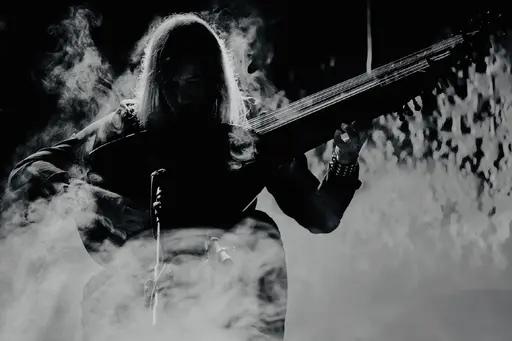
“Rhythm Travel” (1995) was published in Amiri Baraka’s short story collection, Tales of the Out & the Gone (Brooklyn: Akashic Books, 2007), republished here with kind permission of Akashic Books.
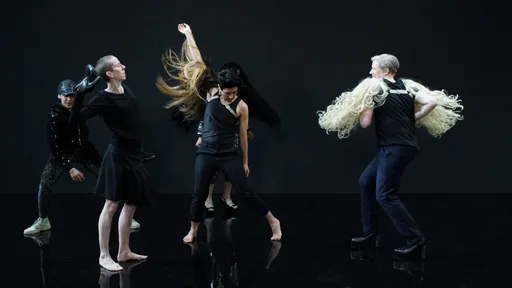
Temporal drag, erotohistoriography, chronomornativity, horniness under capitalism, rhythm, dancing, and crip time.
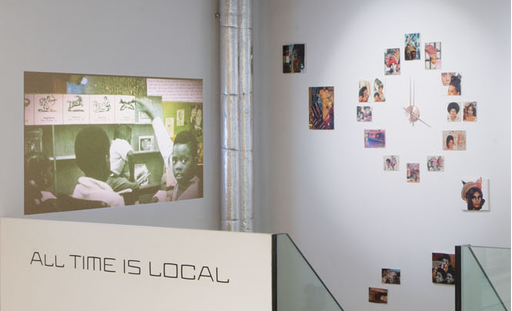
Black Quantum Futurism (Camae Ayewa and Rasheedah Phillips) in conversation with Jeanne van Heeswijk and Rachael Rakes.

“The Clearing: Music, Dysfluency, Blackness, and Time” was originally published in Journal of Interdisciplinary Voice Studies, 5, no. 2, 2020, pp. 215–233 and is republished here in revised form with kind permission of the author.
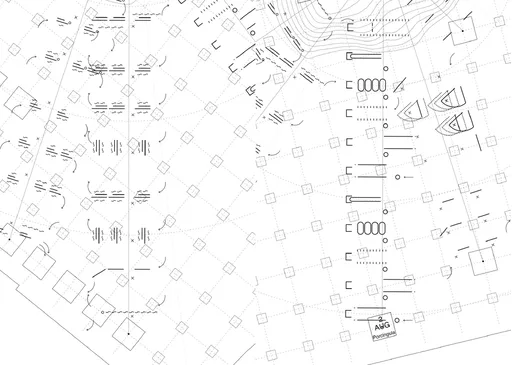
When Indigenous communities are asked to provide proof of their connection to ancestral lands, what Western legal forums accept as documentation does not truly represent or respect tribal culture and traditional formats of knowledge transfer.

How do we reckon with our attachments to place, and their knotted historical relations? A meditation on maritime trade routes, SEA – SHIPPING – SUN (2021), is a short film directed by Tiffany Sia and Yuri Pattison shot over the span of 2 years to render a simulated duration of a day, from The film is set against a soundtrack of shipping forecasts from archival BBC Radio 4 broadcasts. The sun emerges and disappears, again and again.dawn until dusk.
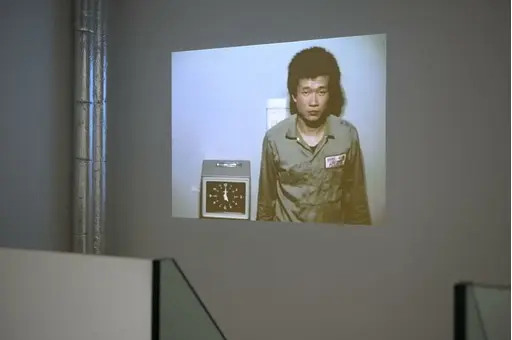
In this essay, Amelia Groom responds to Tehching Hsieh’s One Year Performance 1980–1981: Time Clock Piece (1980–1981), one of the works on view as part of the No Linear Fucking Time exhibition at BAK, basis voor actuele kunst, Utrecht. Through a reading of Dolly Parton’s contemporaneous antiwork anthem 9 to 5 (1980), Groom reflects on historical shifts in the ways that workers have been and continue to be exploited through techniques and technologies of time.

Grappling with the imposed linearity of timespace as a fundamental feature of colonial violence, this essay by Promona Sengupta (also known as Captian Pro of the interspecies intergalactic FLINTAQ+ crew of the Spaceship Beben) proposes a mode of time travel that is “untethered from colonial imaginations of the traversability of time and space.”

Weird Times (2021), is a 30-page chapbook by artists Tiffany Sia and Yuri Pattison on time-telling and hegemony. Featuring writing by Sia and images selected by Pattison, it is a brief history of the development of time-keeping technologies. The clock is disassembled as a political tool, a metronome of coercion and an accelerant of war power. Out of these mechanisms, resistant counter-tempos emerge.
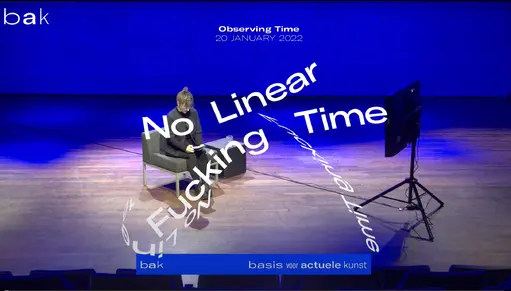
An online conversation with performance artist Tehching Hsieh, writer Amelia Groom, and writer and curator Adrian Heathfield, moderated by BAK curator of public practice Rachael Rakes on 20 January 2022. The conversation takes Hsieh’s work as a starting point in addressing performative time, labor time, gaps, and rhythms of endurance, among other things.
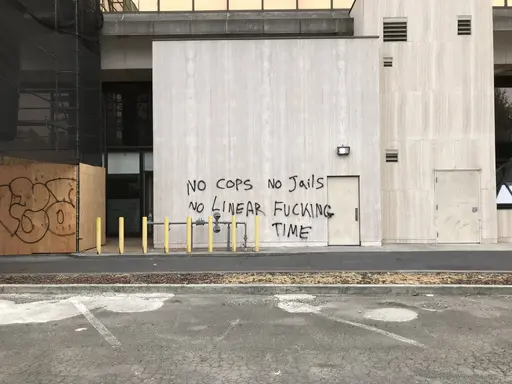
The “No Linear Fucking Time Bibliography” is an evolving resource which compiles selected scholarly and artistic texts relating to the various strands of study involved in this project.
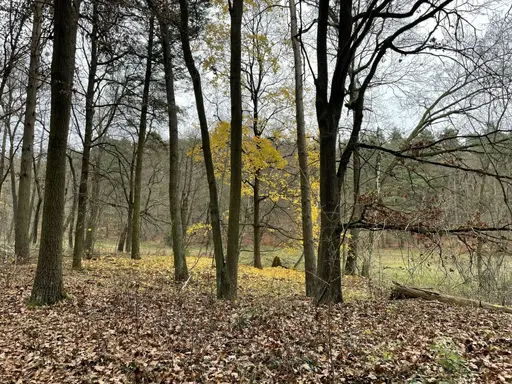
In “Reclaiming Time: On Blackness and Landscape” (first published in PN Review 257 in 2021), poet Jason Allen-Paisant traces the racialized social contexts and modern environmental constructs that “disproportionately rob Black lives of the benefits of time.”
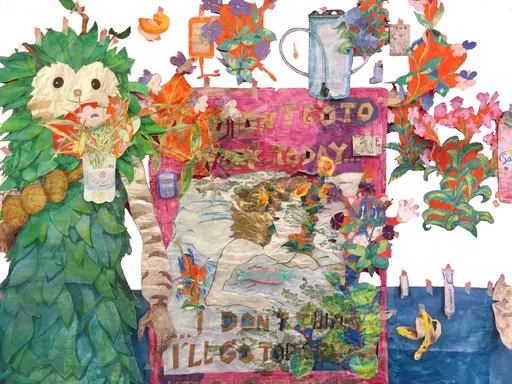
While walking through the “Nothing To Declare” arrivals gate at London Stansted Airport, Sam Keogh is confronted by three border guards: a pig, a unicorn, and a worried cartoon clock.

In this conversation with Walidah Imarisha (first published in Toward the Not Yet: Art as Public Practice, published by BAK and MIT Press, 2021), the writer and activist outlines her concept of “visionary fiction” as an imaginative practice to emancipate futures from the stronghold of linear time.
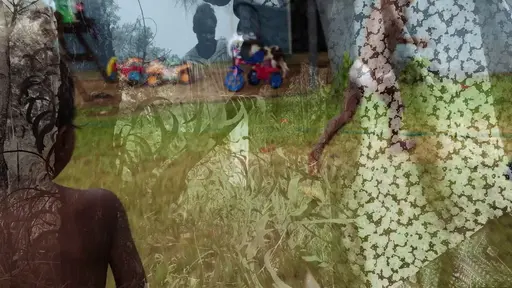
Drawing from her work as part of the Karrabing Film Collective, Elizabeth A. Povinelli’s essay “In Some Places the Not-Yet Has Long Been Already” (which first appeared in Toward the Not Yet: Art as Public Practice, published by BAK and MIT Press, 2021) contrasts the temporal orientation of late settler liberalism—which is troubled by the coming catastrophes of climate collapse—with the ancestral catastrophes of coloniality and enslavement, which are both past and present.

Designed by Rissa Hochberger, with additional design by JJJJJerome Ellis and Kelvin Ellis, the book The Clearing is the eighth title in Wendy’s Subway’s Document Series, an interdisciplinary publishing initiative highlighting the work of time-based artists in printed form.

In her text “Dearest Zen (Letters to Lichen),” artist and scientist Adriana Knouf presents future love letters written to lichens, symbiotic organisms of fungi and algae or cyanobacteria.

In “Immortals: On the Ancient Future Lives of Stone and Plastic,” Marianne Shaneen blends stories, histories, and ontologies of two substances: stone and plastic.
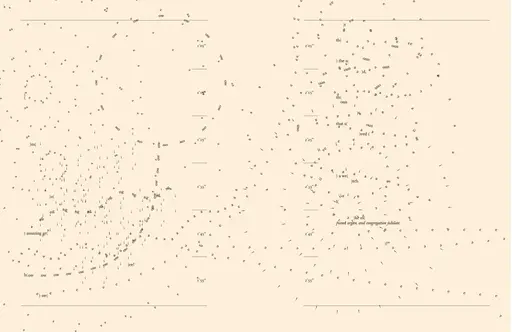
“The Clearing: Melismatic Palimpsest” is a part of musician and writer JJJJJerome Ellis’s multi-faceted project The Clearing (book published by Wendy’s Subway and album of the same name released by NNA Tapes, 2021). Conceiving of the forest and its clearings as “sites of resistant black oralities for centuries,” Ellis explores how stuttering, blackness, and music can figure within practices of refusal against the hegemonic governance of time, speech, and encounter.